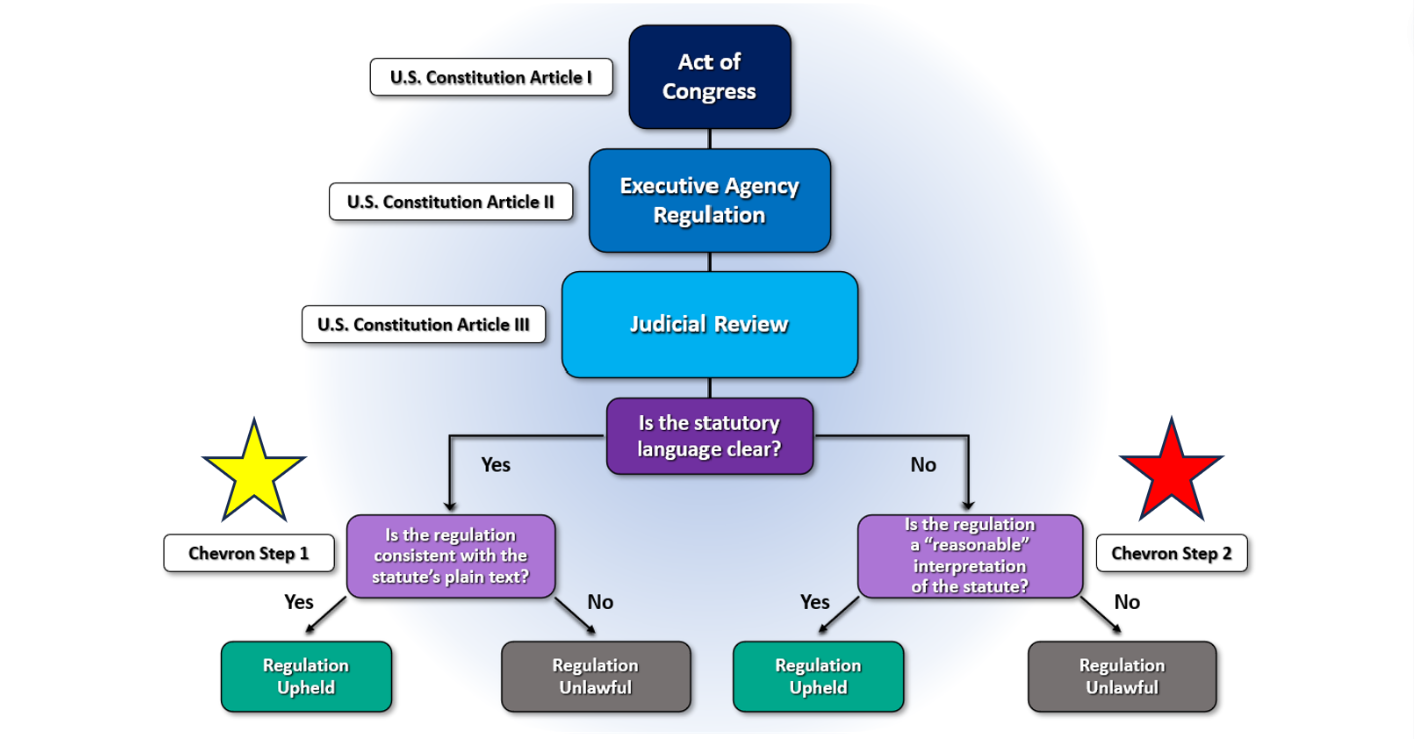Chevron Ruling Background: Chevron Ruling Explained

Chevron ruling explained – The Chevron ruling, formally known as Chevron U.S.A., Inc. v. Natural Resources Defense Council, Inc., is a landmark Supreme Court case that established a deferential standard of judicial review for agency interpretations of ambiguous statutes. This ruling has had a significant impact on administrative law and the relationship between the judiciary and the executive branch.
The Chevron ruling, explained in detail in the landmark chevron decision supreme court , provides a framework for judicial review of agency interpretations of statutes. By deferring to agency expertise, the Chevron ruling has had a significant impact on the balance of power between the judiciary and administrative agencies, shaping the interpretation and implementation of laws in the United States.
Historical Context
Prior to the Chevron ruling, the Supreme Court had employed a more searching standard of review for agency interpretations of statutes. Under this standard, courts would overturn agency interpretations that were not “reasonable” or “supported by the evidence.” However, the Chevron ruling shifted the balance in favor of deference to agency interpretations.
The Chevron Ruling, a doctrine that gives deference to agency interpretations of ambiguous laws, has been a subject of debate. Thomas Massie , a libertarian-leaning Republican congressman, has been a vocal critic of the ruling, arguing that it gives too much power to unelected bureaucrats.
However, the Chevron Ruling remains a significant legal doctrine that continues to shape the interpretation of statutes and regulations.
Legal Precedents
The Chevron ruling built upon several earlier Supreme Court cases that had established the principle of judicial deference to agency expertise. In Skidmore v. Swift & Co. (1944), the Court held that courts should give “great weight” to the interpretations of an agency that was “entrusted with the administration of the statute.” In United States v. Mead Corp. (1954), the Court further held that courts should defer to agency interpretations that were “rational and consistent with the statute.”
Chevron Deference Doctrine

The Chevron Deference Doctrine is a significant principle in administrative law that governs the level of deference courts should accord to agency interpretations of statutes. It was established in the landmark 1984 Supreme Court case Chevron U.S.A., Inc. v. Natural Resources Defense Council, Inc.
The Chevron Doctrine consists of a two-part test:
Step 1: Clear Statutory Language, Chevron ruling explained
First, courts must determine whether the statute in question is clear and unambiguous. If the statute’s language is clear, courts will give effect to the plain meaning of the statute, and no deference to the agency’s interpretation is necessary.
Step 2: Ambiguous Statutory Language
If the statute is ambiguous, courts will defer to the agency’s reasonable interpretation of the statute. This deference is based on the premise that agencies have expertise in their respective fields and are better equipped to interpret the statutes they administer. However, the agency’s interpretation must be permissible, meaning it must be within the range of reasonable interpretations of the statute.
The Chevron Deference Doctrine balances the need for judicial deference to agency interpretations with the need for accountability. It allows agencies to exercise their expertise in interpreting statutes while ensuring that their interpretations are not arbitrary or capricious.
Impact and Implications of Chevron Ruling
The Chevron ruling has significantly reshaped the relationship between courts and agencies, leading to a more deferential approach by courts to agency interpretations of statutes.
Critics argue that the doctrine of Chevron deference has led to excessive deference to agencies, undermining the role of judicial review. They contend that courts should be more willing to scrutinize agency interpretations and ensure that they are reasonable and consistent with the statute’s text and purpose.
Criticisms and Debates
- Excessive deference to agencies, undermining judicial review.
- Potential for agencies to interpret statutes in ways that are inconsistent with the intent of Congress.
- Erosion of the separation of powers between the judiciary and the executive branch.
Examples of Application
The Chevron ruling has been applied in numerous subsequent cases, influencing administrative law. In United States v. Mead Corp. (2001), the Supreme Court held that the Environmental Protection Agency’s (EPA) interpretation of the Clean Air Act was entitled to Chevron deference. The Court found that the EPA’s interpretation was reasonable and consistent with the statute’s text and purpose.
In King v. Burwell (2015), the Supreme Court held that the Affordable Care Act’s provision for tax credits for health insurance premiums was available to individuals who purchased insurance through exchanges established by the federal government, not just through state-established exchanges. The Court’s decision relied on Chevron deference, finding that the IRS’s interpretation of the statute was reasonable and consistent with its text and purpose.
The Chevron ruling explained the deference courts must give to agency interpretations of statutes. However, the Supreme Court has recently limited this deference in cases involving supreme court homeless. This limitation reflects the Court’s concern that agencies may not be sufficiently accountable to the public when interpreting statutes.
The Chevron Ruling Explained is a significant legal precedent that has shaped the interpretation of environmental laws. The Chevron case, which pitted the Natural Resources Defense Council (NRDC) against Chevron, established the principle of judicial deference to agency interpretations of ambiguous statutes.
This doctrine, known as the Chevron Doctrine, has been applied in numerous cases, including Chevron vs NRDC , and has had a profound impact on the balance of power between the courts and administrative agencies.
The Chevron ruling is a landmark Supreme Court decision that has had a significant impact on the way that courts review agency decisions. The ruling established a two-part test for determining whether an agency’s interpretation of a statute is entitled to deference.
First, the court must determine whether the statute is ambiguous. If the statute is ambiguous, the court will defer to the agency’s interpretation if it is reasonable. For more details about this, you can refer to the full explanation of the chevron ruling explained.